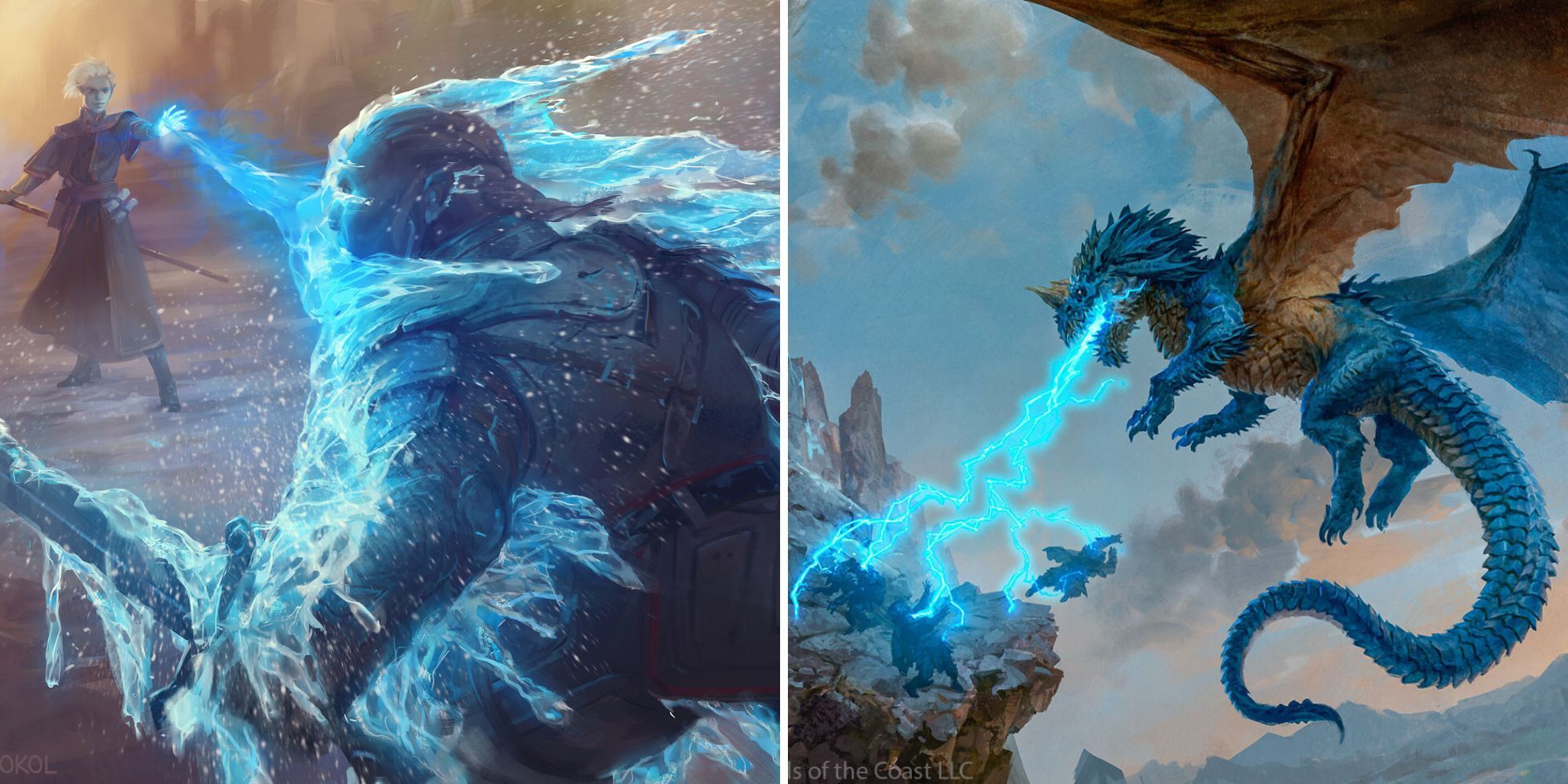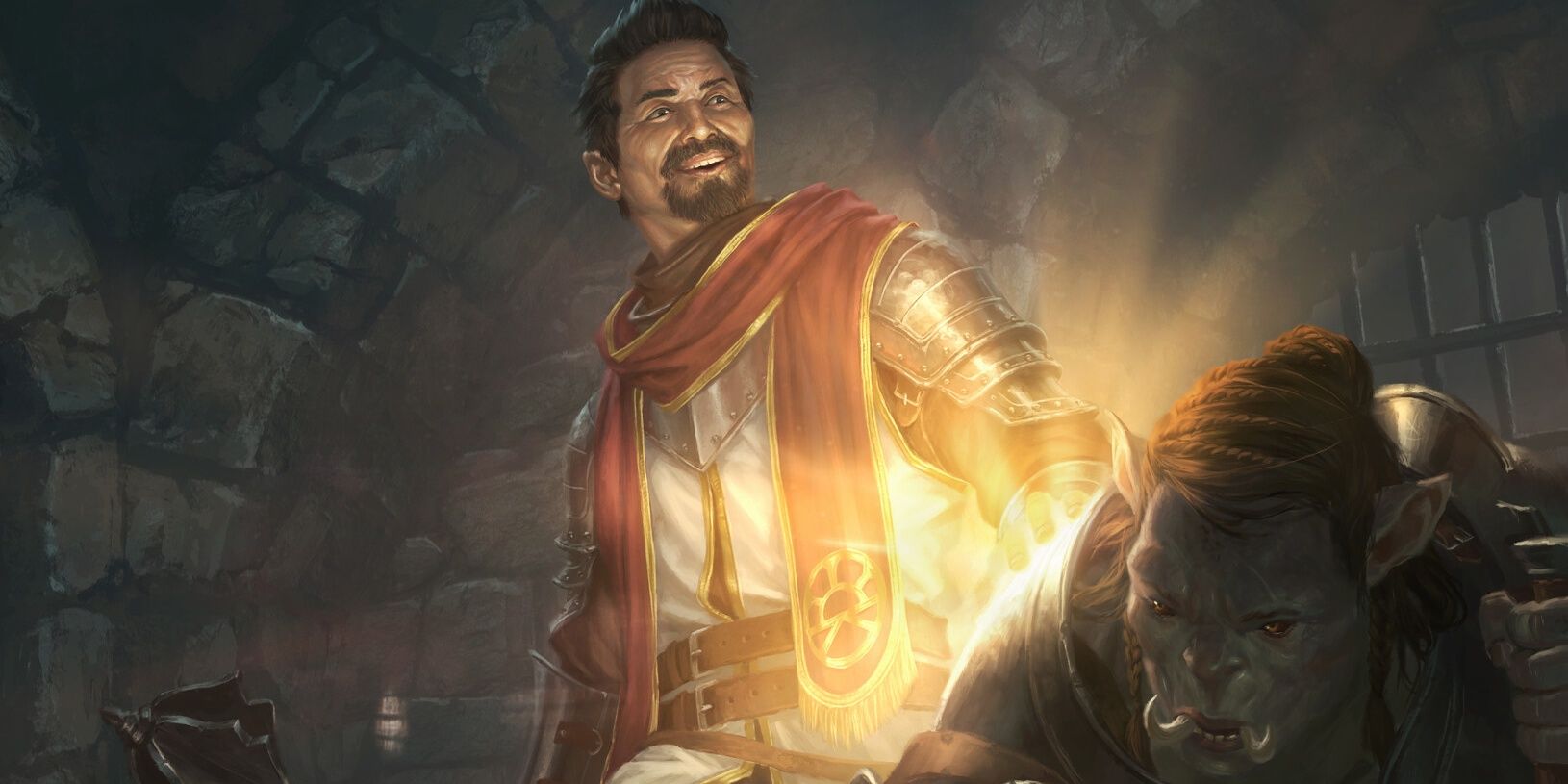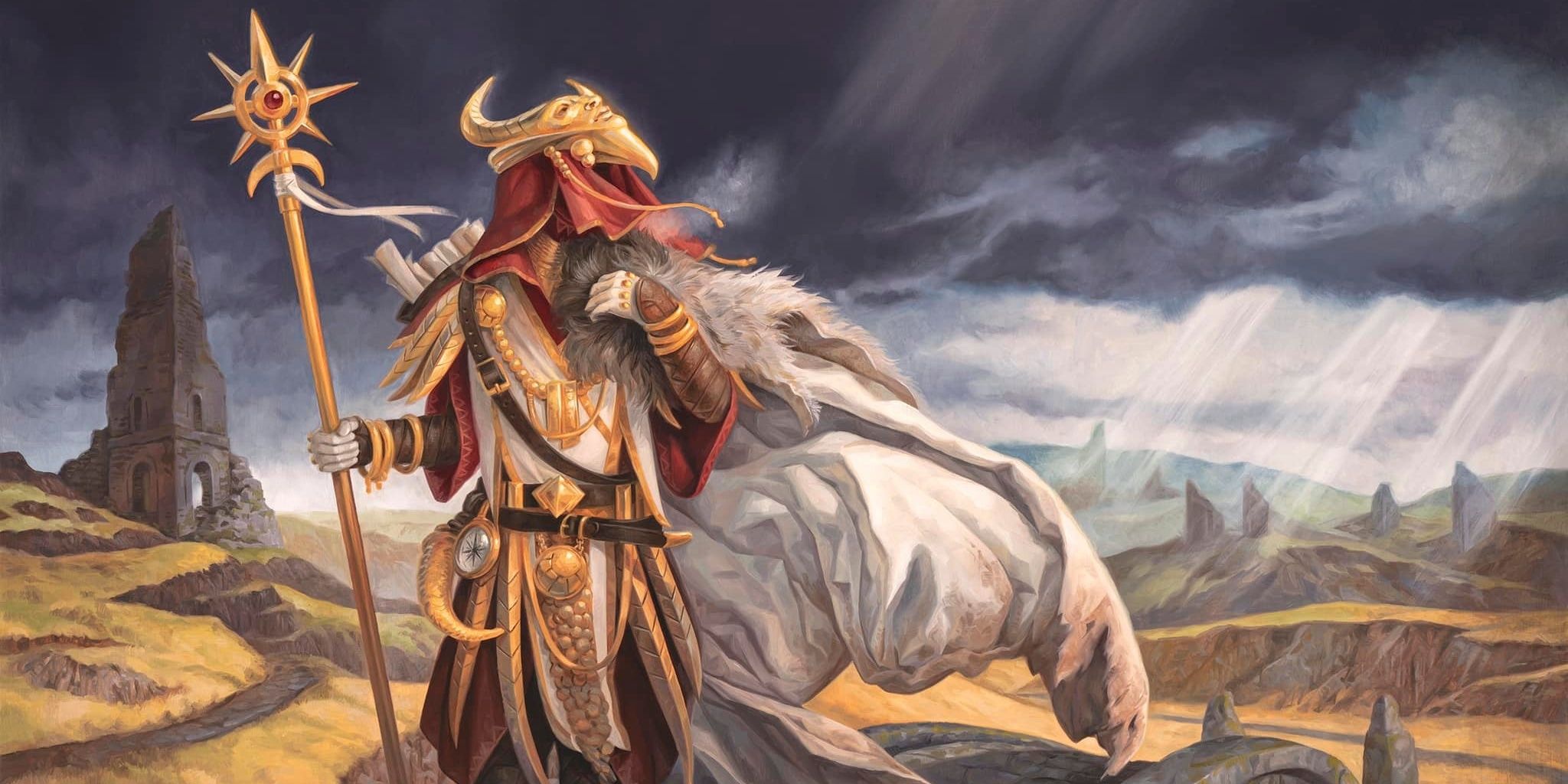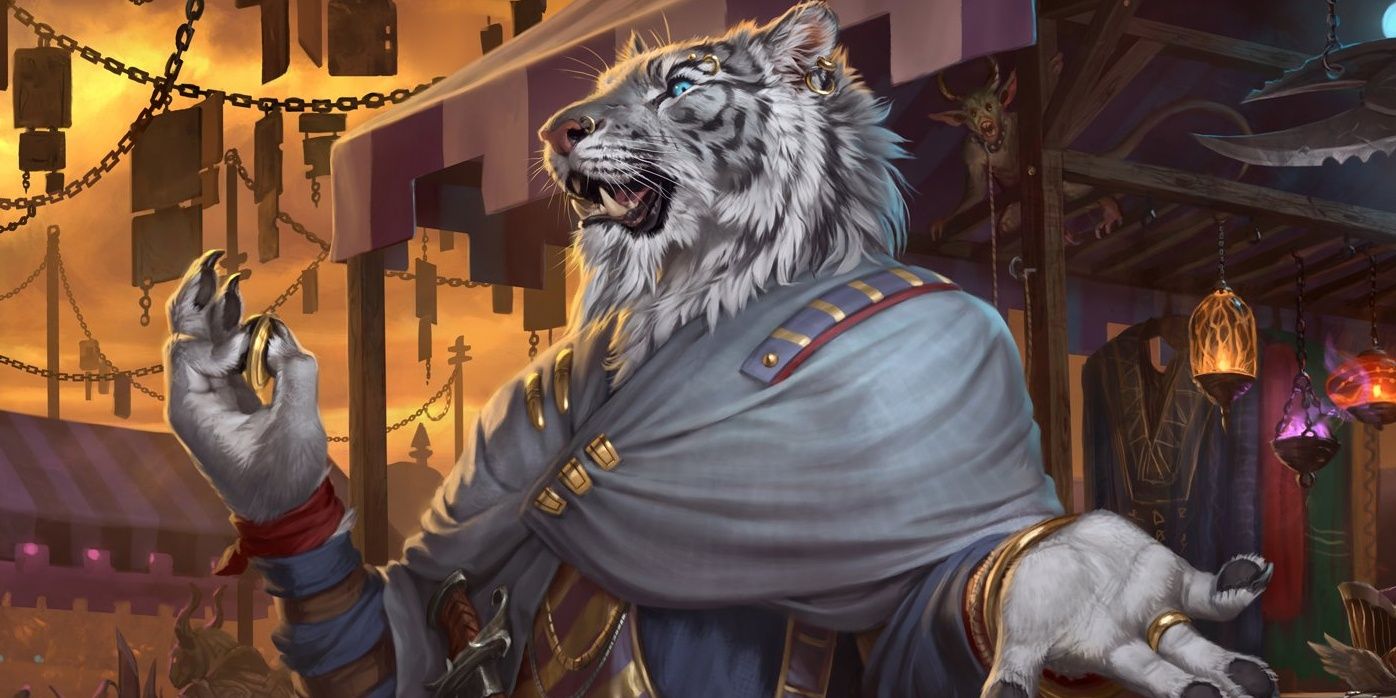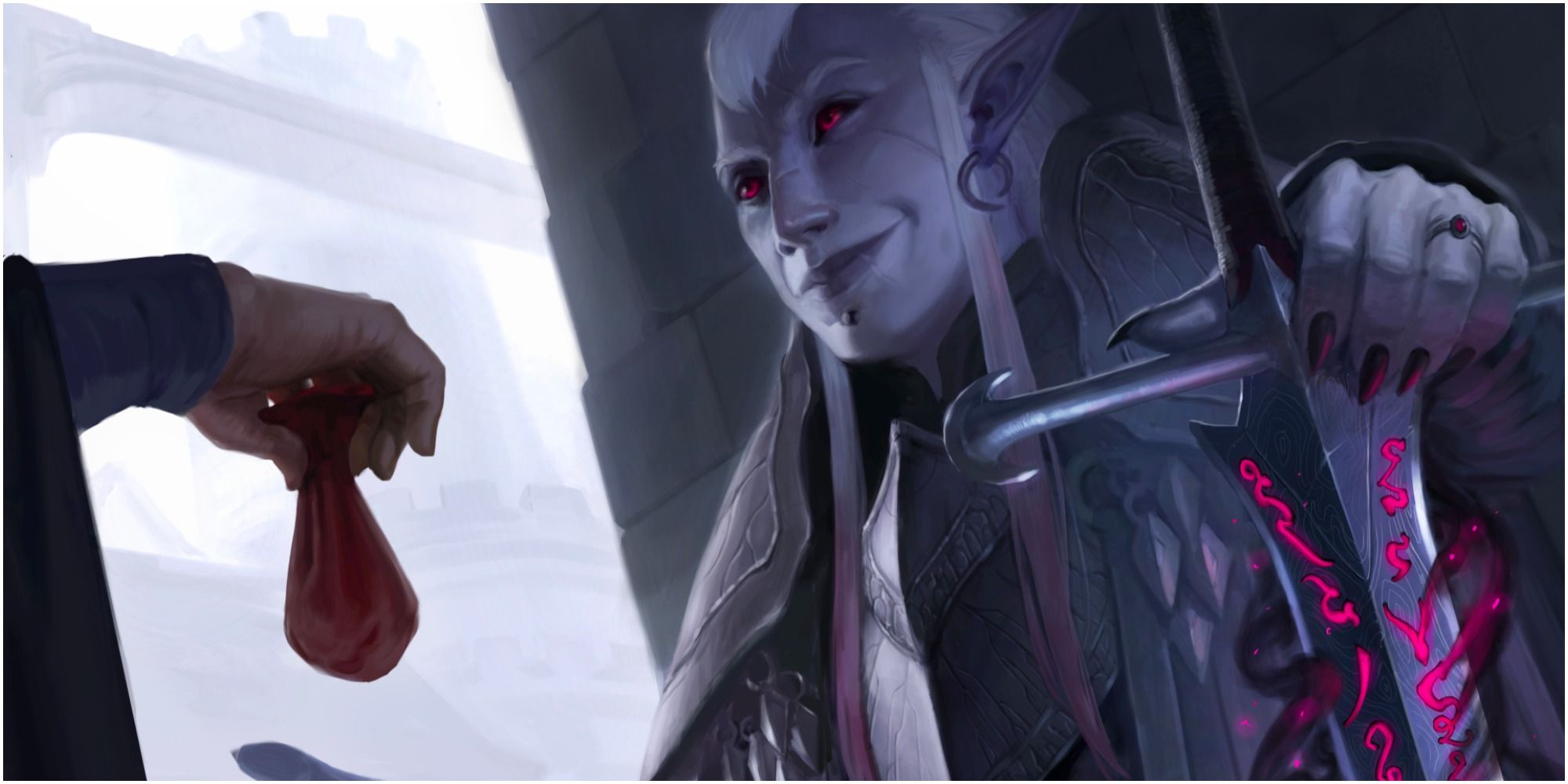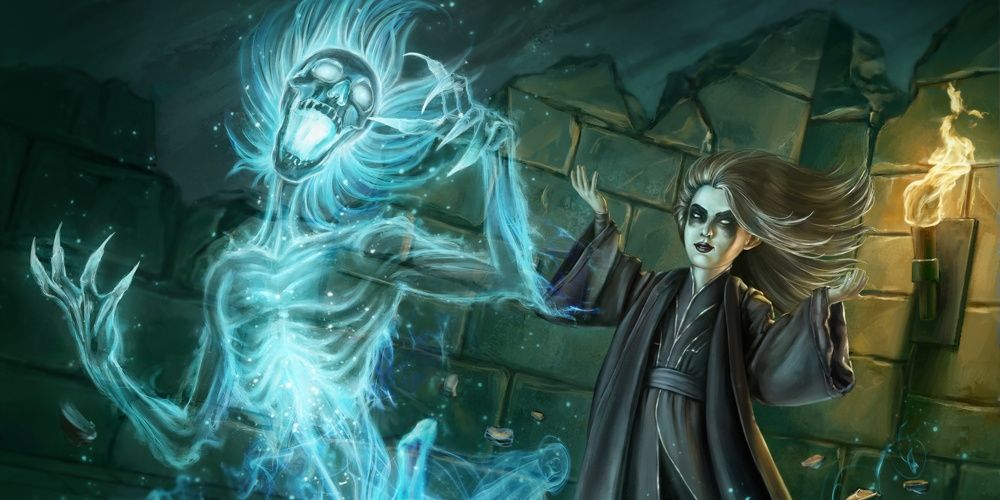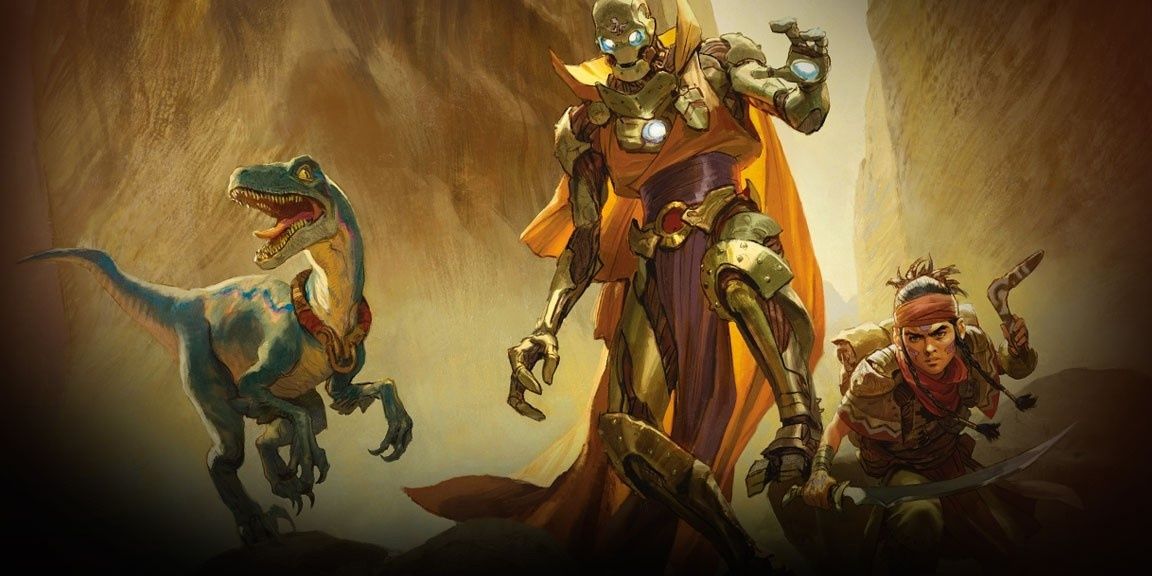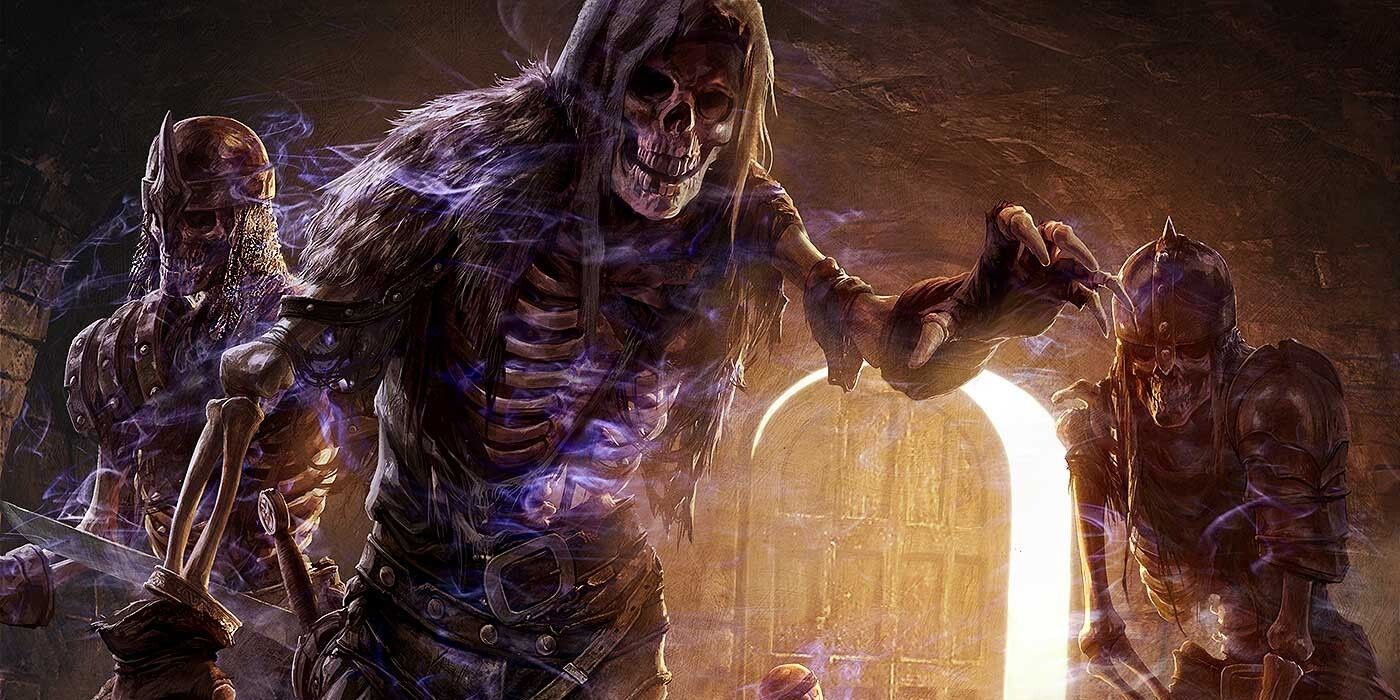Adventurers die. Given enough time braving the dangers of the worlds that Dungeons & Dragons has to offer, it's simply bound to happen. Thankfully, death doesn't have to be the end of an adventurer's story. In fact, the miracles of resurrection magic make it so that an adventurer can die time after time yet still return to fight the forces of evil another day.
However, this doesn't mean that death should be a small or unimportant matter. If it is, then even the town's commonfolk wouldn't be so afraid of the things that go bump in the night. After all, they can just get resurrected by the town's local priest if they happen to die! For this reason and many more, resurrection magic should be difficult to access in the large majority of campaigns. There are many ways to gate PCs' (player characters) ability to access resurrection: money, material scarcity, or average town cleric ability among them. However, when your PCs do finally gather up the necessary requirements for resurrection, the scenario should be epic.
7 A Local Priest
Perhaps the most common way for players to resurrect their allies, especially at lower levels, is locating the town priest. However, this may not even be an option in many campaigns. After all, every town priest having access to resurrection magic would be a pretty world-shaking setting choice for reasons mentioned in the introduction. Nonetheless, it does make sense for the head clergy members in larger cities to have access to the Raise Dead spell.
Otherwise, it could be the case that the priest in a small town was passed down a scroll of resurrection from a previous generation and told to only use it for a hero worthy of being called back from the dead. Either way, resurrection through a local priest should not be as simple as depositing your friend's body at the temple. It may require that the party perform a task for the priest, prove their fallen comrade's worth to them, or take up oaths in the service of the deity that the priest serves. Alternatively, they may just need to pay a big enough tithe to the church for the clergy to purchase shiny new pews or provide the necessary material costs (specifically, a diamond worth at least 500gp) for the casting of the spell. No matter what hurdle the DM chooses, it will make the experience memorable.
6 Divine Intervention
For heroes who have the worship of a certain God as a large part of their backstory or whose deeds merit the attention of a certain deity, divine intervention is certainly an option. Be careful with this method, though, as it is the most prone to having a "deus ex machina" feel.
Some ways to lessen the contrived nature of divine intervention resurrections include the intervening deity being a different God than the one the player character served, the deity asking that the party promise to perform a favor in exchange for their friend's life, and limiting the player character's time returned to the living (this particular method was popularized by Vax's resurrection in Critical Role).
5 Deal With A Devil
Unfortunately, not all heroes are made of heroic deeds. Some deal in seedier acts, leaving their mark on the world for the forces of evil. For these such heroes, making a deal with a powerful devil for the privilege of resurrection should be right up their alley. Most often, devils are interested in forever claiming the soul of any mortal they help. While this might not seem like the most important cost in the moment, it can have world-shattering effects when properly put to use.
For example, a character who makes such a deal and then dies past level ten might be incapable of being resurrected due to the devil's contract being written with fine print that stated once the hero reached a certain level of power, their soul would then move to serve their hellish machinations. This makes for a great way to turn a previous character into your next BBEG, and the underhandedness of it all will have your players fueled with the desire to destroy or try to save their past friend gone evil.
4 Revenge Of The Revenant
Speaking of desire, the lore of revenants is particularly apt for the resurrection of player characters who have yet to complete the revenge meted out in their backstory. According to the revenant's lore, these monsters arise from the souls of those who met a particularly cruel or undeserving fate. Revenants exist for one reason: to claim revenge against the one responsible for their mortal demise.
Consequently, this is a great method of resurrection for characters who die at the hands of a current arc's BBEG or their character's own personal backstory villain. The addition of a revenant to the party is also an interesting story mechanic as traveling with the undead isn't exactly an acceptable thing to do by the standards of most mortals. Just know ahead of time that once the revenant claims its revenge, its soul will then forever rest in the afterlife.
3 Keening Spirit
In the same vein of introducing a zombie to the party, this method of resurrection will see a player character return as a ghost. Ghosts are spirits who return to the worlds of the living due to incredible trauma, unfinished business, or an intense bond formed with an item or another creature. If the player character who died was particularly attached to a weapon, spellcasting focus, or other trinket, this makes for a very interesting way of bringing them back from the dead.
Perhaps the player character returns to see that the item or creature they are bonded with accomplishes a certain goal, or maybe their spirit simply wished to be near the item or person for as long as spiritually possible. For example, it could be that if the item or other player character the ghost is attached to is broken or killed, the ghost player character finally departs to the afterlife. Whatever the case, introducing a ghost player character is very cool.
2 Scientific Wonder
What could be more creative than resurrecting a player character as a member of the undead? How about turning them into a construct! Maybe the only NPCs nearby at the time of a player character's death are gnome or goblin engineers with a tendency for taking their inventions a little too far. For the right price, they might be able to restore some semblance of life to the player character's body using their brilliant artificing skills.
Furthermore, the warforged player race from Eberron provides the perfect outline for resurrecting a player character in this manner. Players who are especially interested in science fiction, robots, or the spelljammer setting might be especially open to this kind of development.
1 Adventure To The Underworld
Last but not least, there's always the good old story of the party venturing into the underworld to take back the soul of their party member themselves. This is a particularly long-winded method of resurrection for most games, but that's partly what makes it the most epic. There's nothing that tells a player that the rest of the players at the table care about their character than the lot of them deciding to go on a deadly adventure to bring their dead player character back to their side.
It should be mentioned that if you choose to go for this method, the player whose player character is dead is going to need to play another adventurer during the journey to restore his old character's life. This adventurer could be a friend, family member, or other NPC that bonded with the player's dead character and wants to see him resurrected just as much as the party. Alternatively, they could be a servant of a god the dead player character worshipped who has come to help the party restore their God's righteous servant. Whatever you decide, this is no doubt one of the most epic ways to resurrect a player character and is sure to provide a memorable adventure for everyone involved.

